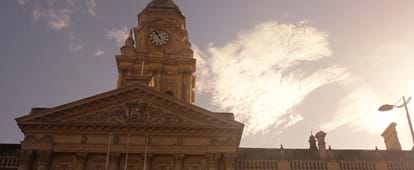By creating an account, I agree to the
Terms of service and Privacy policy
Choose your country and language:
Africa
Americas
Asia Pacific
Europe
‘Cape Town, more than any other city in South Africa, has been home to people from different cultures for a long, long time.’ – Nelson Mandela
While Nelson Mandela's legacy will continue to be felt worldwide, it will be especially so here in South Africa, where he was a leader of the anti-apartheid Struggle and oversaw the transition to democracy, becoming the country’s first democratic president in 1994.
The many events and milestones that shaped the course of history in South Africa will be remembered for years to come, while the country’s historic sites will continue to be visited by those with an interest in our heritage. In the life of Nelson Rolihlahla Mandela, Cape Town is a significant part of that story.
In his autobiography, Long Walk To Freedom , Mandela mentions his first visit to Cape Town in 1955. It would be the last time he would visit the city of his own accord for many years. In 1964, he was sentenced to life imprisonment for sabotage and conspiracy as a leading member of the African National Congress, and was sent to Robben Island along with his co-accused. Robben Island had long been used to imprison political prisoners, and Mandela spent 18 years of his life there, in a cell that measured 2.4m by 2.1m, with a straw mat on which to sleep.
Regular ferries to Robben Island, proclaimed a World Heritage Site in 1999, now offer visitors the chance to see the prison for themselves.
Cape Town’s skyline would be incomplete without the backdrop of Table Mountain, and while Mandela never visited the summit, the mountain was of some importance to him.
'During the many years of incarceration on Robben Island, we often looked across Table Bay at the magnificent silhouette of Table Mountain,' he said. 'To us on Robben Island, Table Mountain was a beacon of hope. It represented the mainland to which we knew we would one day return.'
During Mandela’s years of incarceration, a number of other public figures kept the Struggle against apartheid alive and attracted support from around the world. The Archbishop of Cape Town, Desmond Tutu, was among the most notable, and St George's Cathedral, located on Wale Street, in many ways became the spiritual home of the Struggle.
Pollsmoor and Victor Verster prisons
In the last years of his imprisonment, Mandela was moved to Pollsmoor Prison in Tokai, and then Victor Verster Prison (now Drakenstein Correctional Centre) in Paarl, outside of Cape Town. In 1990, the terms of his release were agreed – the government unbanned the ANC and Mandela’s long walk to freedom was almost complete. That phrase took on a very literal meaning when live visuals were broadcast of Mandela leaving prison, walking towards freedom for the first time in 27 years. The house he stayed in at Victor Verster Prison can still be visited today, and a large statue stands at the spot where he was released.

After leaving the prison, he headed to Cape Town's city centre, where he addressed a massive crowd of supporters outside City Hall. During a rousing speech, he declared his commitment to peace and reconciliation with the white minority, but made it clear that the ANC's armed struggle was not over, and would continue as 'a purely defensive action against the violence of apartheid'. He insisted that his main focus was to bring peace to the black majority and give them the right to vote in national and local elections. City Hall often holds important events, but that day – 11 February 1990 – will surely be remembered as one of the most important.
South Africa's Parliament sits in Cape Town, making the city the legislative capital of the country. It was from an austere parliamentary chamber in Plein Street that the first apartheid laws were created after the National Party came to power in 1948. It was also the site of Struggle for Helen Suzman, who, for many years, was the sole MP opposed to the National Party's apartheid policies – and she suffered intimidation and harassment for doing so.
Of course, Parliament is also the place where apartheid laws were dissolved by the democratically elected government after 1994. Guided tours through Parliament's buildings reveal that many of the far-reaching decisions in our country's history were made within its walls.
Tuynhuys and the Company's Garden
During his time as president, Mandela used Tuynhuys as his official presidential office in Cape Town, and often enjoyed walks around the grounds and through the neighbouring Company's Garden – much to the delight of unsuspecting Capetonians.
Other Cape Town sites
As a respected political figure, Mandela met many major heads of state. In 1996, the German government marked his visit to their country with a special gift – a piece of the Berlin Wall, which can now be seen at the top of St George’s Mall, outside Mandela Rhodes Place.
At the V&A Waterfront, a statue of Mandela can be seen alongside the country’s other Nobel Peace Prize winners – Albert Luthuli, Desmond Tutu and FW de Klerk.
Nelson Mandela Boulevard
One of the major highways in Cape Town was renamed in honour of Madiba. Nelson Mandela Boulevard is the gateway to Cape Town, and serves as a lasting legacy to his vision of a people united in their diversity.
There are other sites of Struggle around Cape Town, many places scarred by the legacy of a system based on discrimination and disempowerment: District Six, for many, is that pain wrought visible on the Cape Town horizon. But there are also tales of immense courage, strength and determination to be found in these places.
Tracing Mandela's steps across the Mother City reminds us of the measure of the man; he has left an indelible mark.

